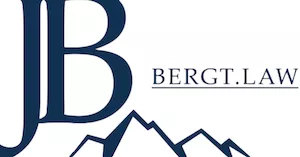Introduction
The EU Prospectus Regulation, which came into force on July 20, 2017, and became fully applicable from July 21, 2019, marks a significant shift in the financial regulatory landscape of the European Union. Primarily aimed at simplifying and making securities prospectuses more user-friendly, this regulation facilitates informed investment decisions and eases the process for companies to access the capital market.
Key Changes to the previous Prospectus Directive and Exemptions Under the New Regulation
- As it is a directly applicable Regulation instead of a Directive which has to be implemented on the national level, a minimum level of harmonization was created on the European single market.
- Introduction of Universal Registration Document: This document, encompassing information about the issuer's organization, business activities, financial condition, and future prospects, can be transformed into a prospectus with the addition of a description of the securities and a summary. This facilitates issuers in becoming frequent issuers, thereby reducing the prospectus approval time.
- Simplified Disclosures for Secondary Issuances: The regulation stipulates simplified disclosure requirements for certain companies, particularly those whose securities have been on a regulated market or a special SME market segment for at least 18 months.
- EU Growth Prospectus for SMEs: This new type of prospectus offers reduced disclosure requirements for SMEs, enhancing investor protection through improved information presentation.
Implementation of National Regulatory Scope
- Article 1(3) Application and Exemptions: Offers of securities to the public within the EU totaling less than €1 million over 12 months are exempt from the prospectus requirement. However, member states can impose other disclosure requirements.
- Increased National Threshold: From July 21, 2018, member states can raise the threshold for the obligation to publish a prospectus up to €8 million over a 12-month period.
- Liechtenstein's Adoption of the Regulation: Liechtenstein, through the EWR-WPPDG, has aligned its national threshold with the maximum limit of €8 million, as permitted by the regulation by making use of this opening clause.
Definition and Requirements of a Public Offer
- Legal Definition: A public offer, as defined by the regulation, is any communication to the public in any form and by any means, providing sufficient information on the terms of the offer and the securities to enable an investor to decide to purchase or subscribe to those securities. The requirements for this are not high, and essentially any form of communication (especially on the internet) disclosing the necessary content of a contract with regard to securities (essentialia negotii1: parties, object and price) may be deemed a public offering.
- Content Requirements: The information must enable an investor to make an informed purchase decision, focusing on essential aspects like the object of purchase and price.
- Form and Nature of Communication: Targeted communication to investors is necessary. Merely answering an investor's inquiry does not constitute a public offer.
- Scope and Public Accessibility: Offers directed at a selected or known group, such as employees or certain professionals, may generally still be considered a public offering. This even includes offers to existing shareholders in rights issues, which might be subject to simplified disclosure under certain conditions.
Prospectus Requirements for Admission to a Regulated Market
- Obligation for Prospectus: A prospectus is required for securities to be admitted to a regulated market in the EU, as per Article 2 of the regulation.
- Verification by Stock Exchanges: Stock exchanges respectively regulated markets verify the existence of a prospectus or an exemption from the prospectus requirement during the admission process.
Exemptions from Prospectus Requirement
- General Exemption for Offers Under €1 Million: Offers with a total value less than €1 million in the EU over 12 months are exempt.
- Specific Exemptions Based on Offer Types: The regulation lists specific exemptions based on the nature of the offer, including offers directed exclusively at qualified investors, offers to fewer than 150 non-qualified investors per member state, and offers where securities have a minimum denomination of €100,000.
However, it should be noted that the passporting (notification) privilege within the single market only applies to an endorsed prospectus.
Conclusion
The EU Prospectus Regulation represented a paradigm shift in the regulatory framework governing securities offerings within the European Union. Its implementation not only harmonized the requirements across member states but also streamlined the process, making it more efficient for issuers and safer for investors.
Source: BaFin on obligation to publish a prospectus
Executive Summary:
- The EU Prospectus Regulation simplifies securities prospectuses, facilitating informed investment decisions and easier capital market access.
- The regulation introduces a higher threshold for exemptions and a universal registration document for frequent issuers.
- Simplified disclosures for secondary issuances and the EU Growth Prospectus are notable features benefiting SMEs.
- National regulatory scopes allow member states to set higher thresholds for prospectus requirements.
- Public offers require targeted communication with sufficient information for investment decisions.
- Specific exemptions from the prospectus requirement include offers to qualified investors and offers of high-denomination securities.
- The regulation aligns with international standards, enhancing investor protection and market efficiency.
The content of this article is intended to provide a general guide to the subject matter. Specialist advice should be sought about your specific circumstances.

